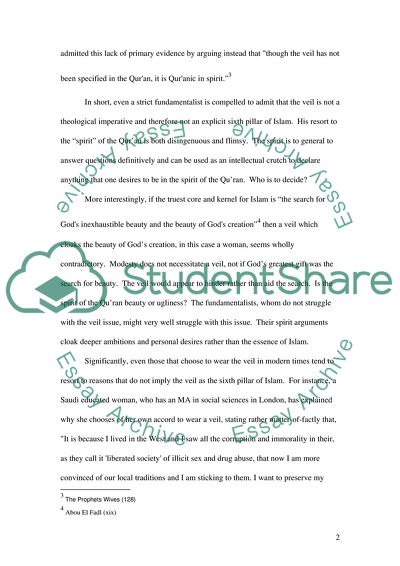Cite this document
(Wearing the Veil in Islam Essay Example | Topics and Well Written Essays - 3750 words, n.d.)
Wearing the Veil in Islam Essay Example | Topics and Well Written Essays - 3750 words. Retrieved from https://studentshare.org/religion-and-theology/1710936-the-viel
Wearing the Veil in Islam Essay Example | Topics and Well Written Essays - 3750 words. Retrieved from https://studentshare.org/religion-and-theology/1710936-the-viel
(Wearing the Veil in Islam Essay Example | Topics and Well Written Essays - 3750 Words)
Wearing the Veil in Islam Essay Example | Topics and Well Written Essays - 3750 Words. https://studentshare.org/religion-and-theology/1710936-the-viel.
Wearing the Veil in Islam Essay Example | Topics and Well Written Essays - 3750 Words. https://studentshare.org/religion-and-theology/1710936-the-viel.
“Wearing the Veil in Islam Essay Example | Topics and Well Written Essays - 3750 Words”, n.d. https://studentshare.org/religion-and-theology/1710936-the-viel.


